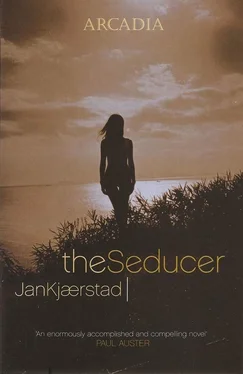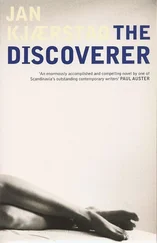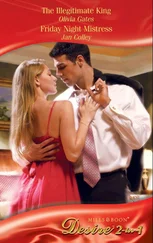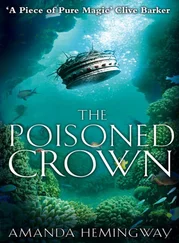They were going to have to go back into the water, clamber a little way down the bank before swimming out and drifting with the current over the next stretch of rapids to the pool where the others were waiting for them in the raft. He was no longer afraid. It was going to be all right. He knew it would be all right. Veronika had regained her breath, was half-sitting, staring into space. Jonas knew it would be all right. The others were waiting. It wouldn’t be too much of a problem to drift over the rapids on their backs. It would be all right. His project too was going to work out just fine. He knew it. He would get there. He would see it through even if he had to take on the whole of NRK, the Norwegian Broadcasting Corporation, single-handed. He took Veronika’s hand and pulled her to her feet. They clambered down the bank a little way before once more plunging into the foaming waters.
Jonas Wergeland had originally intended to open the programme on Ole Bull with the central character, in the shape of Normann Vaage, standing by a waterfall, playing one of his hell-for-leather compositions: a nod, so to speak, in the direction of the myth of the Fossgrimen, the fiddle-playing sprite of the falls, and the magic of the fiddlers of old. This sequence would also have fitted in beautifully with a cut to pictures of the green-patinated statue of Ole Bull set amid the fountains in the lovely gardens outside the Hotel Norge in Bergen, after which they could pan up to the peaks of Fløyen and Ulriken and the landscape of western Norway which supposedly meant so much to Ole Bull.
That it did not turn out this way was due not only to Jonas Wergeland’s decision, following one of the basic principles behind the series, to set the key scene in each programme in a foreign location, which meant dispensing with most of the hackneyed images associated with Ole Bull — old Bergen, the family home in Valestrand and, not least, the quite fascinating jumble of a house on the island of Lysøen, a monument to his hectic travels — but also to the fact that at the planning stage Jonas had asked the same question of Ole Bornemann Bull as he asked of all his other chosen subjects: what is the story at the heart of this person’s life? And in Bull’s case, Jonas Wergeland replied as follows: Ole Bull’s story is that of a man who travelled the world over in search of the perfect sounding-board for the Norwegian tone. And this Ole Bull found at the top of the Great Pyramid of Cheops.
Now it could be argued that this scene, too — Ole Bull atop the seventh wonder of the world on his 66th birthday — has been pretty much done to death, but when it came to a choice between this and a scene from Oleana in a small valley in the Allegheny Mountains of Pennsylvania, Jonas opted for Egypt, prompted not only by the fact that this scene could have been made for television but also by another, underlying, motive: the chance of finally getting to see Cairo, one of the few capitals in the world he had not visited. In this respect, Jonas Wergeland falls neatly into line with all the other individuals who have had NRK foot the bill for their own private jaunts abroad.
The greatest challenge was, therefore, to come up with a ploy which would breathe fresh life into the Cheops scene, and this Jonas achieved by alternating vertical shots of the pyramid with a frenetic, panorama sequence which actually constituted the programme’s main leitmotif, depicting Ole Bull travelling the length and breadth of Europe like a sort of musical Casanova in his English-built coach. Thus the programme darted back and forth between a young Ole Bull on his helter-skelter tour of the concert halls of Europe, large and small, and an elderly Ole Bull climbing the Great Pyramid of Cheops. For the scenes of the perpetual progress from one city to the next, from Paris to Trieste, from Cadiz to Riga, Jonas alternated between exterior shots of the coach, with eight fine horses between the traces, and shots of the interior, specially fitted out as a sleeping chamber in which Ole Bull and his manservant could spend the night — all of this filmed on one of the avenues in Frognerparken in Oslo and interspersed with shots from the concerts, where the set — a more or less faithful reproduction built in the studio of the concert hall in Bologna, scene of what was possibly the most important concert of his career — remained the same throughout with various different backdrops representing Florence or St Petersburg simply and quite openly being dropped into place, and Ole Bull always giving a solo performance of the coda, rich in musical pyrotechnics and bravura flourishes, from his own, not particularly well-known, but tempestuous composition ‘ Polacca guerriera ’ — possibly inspired by the eruption of Mount Vesuvius — thus giving the viewers the impression of a constant repetition of the same elements: the massive coach racing full tilt across the same stretch of country; Bull in his seat, the same impatient expression on his face; the same concert hall, the same audience, the same music, the same ovations, the same ladies weeping, the same gifts, flowers and jewellery, brooches and snuff boxes inlaid with precious stones, then the carriage again, charging on through dust, mud, snow, rain, then the concert hall and so on and so forth, broken only by Bull as an old man, shot in slow motion, negotiating the massive stone blocks of the Great Pyramid, the sound of his breathing and his heartbeat amplified, dominating the soundtrack. It was said of this programme that the shaking of the carriage eventually transmitted itself to the armchairs of the viewers at home and that every time the old man was seen laboriously ascending the pyramid they were on the edge of their seats, almost as if they were watching a thriller as if, even though they knew the outcome, they were not sure whether he really would make it.
The middle segment of the programme was given over to the regular spot in which Jonas Wergeland himself, in modern dress, stepped onto the set to interview the central character. Much of the series’ popularity could be put down to this part of the programme, thanks to Wergeland’s unique television presence and the extremely artful way in which the interview revealed certain less well-known aspects of the hero’s character. Thus, in this programme, Jonas Wergeland sat halfway up the Great Pyramid, talking to a clearly exhausted and exaggeratedly aged Ole Bull — looking like a burnt-out Casanova, to pursue the metaphor — with Bull replying as animatedly and as eloquently as was apparently his wont to the questions Jonas Wergeland put to him regarding his Arabian horses, his attempt to commit suicide by jumping into the Seine, that duel with rapiers — did that really happen? — his weakness for casinos, his affair with opera singer Maria Malibran, his two marriages, and is it true, Ole Bull, that you were offered the post of general with the Spanish army? They then went on to talk about his music, about Torgeir Augundsson, the Lad from Myllar, about the Norwegian airs, their unique character, and, above all, about Ole Bull’s great passion: violins — from his first, a Santo Seraphino, by way of all the others, among them an Amati grand patron , a Stradivarius, a Guarnerius — or was it three? — to the pride of them all which he now cradled in his arms, caressing it as if it were a baby, a Gasparo da Salò with the carved angel head at the top of the neck and the delicate zigzag border on the fingerboard. From this Wergeland switched to asking Ole Bull, halfway up the Great Pyramid of Cheops, how his instruments were constructed, got him to explain how the bridges were made lower and flatter so that he could play all of the strings at once and why he used an especially long, rigid, heavy bow, after which Ole Bull demonstrated his finesse on the violin in a brilliant sequence — with close-ups of a real violinist’s hands, of course — in which the viewers were given a taste of Bull’s matchless polyphonies and inimitable cantabile, his pizzicatos and trills and harmonics, together with a mind-boggling staccato technique which could conjure up 350 notes with one stroke of the bow, before the musician rounded off with imitations of everything from birds twittering to the wind sighing in the tops of the birch trees, from waterfalls to the crackle of lightning.
Читать дальше












